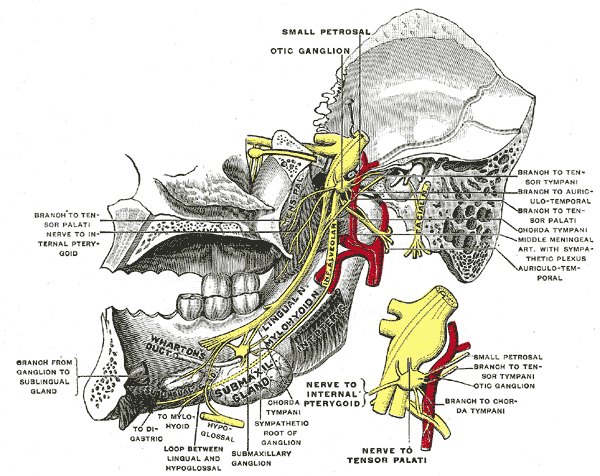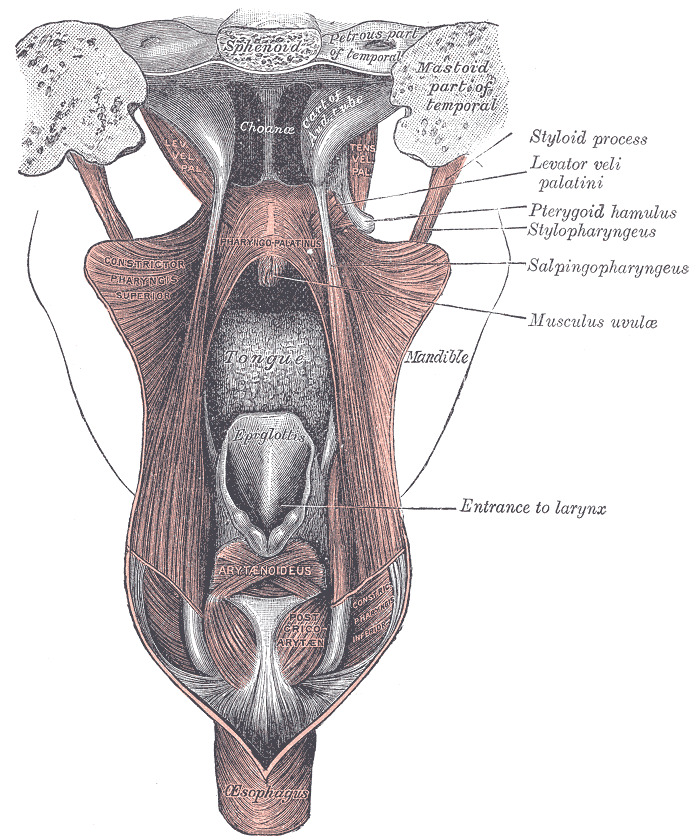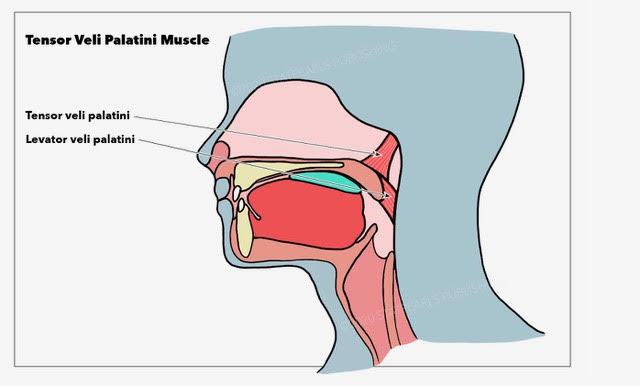[1]
Gyanwali B,Li H,Xie L,Zhu M,Wu Z,He G,Tang A, The role of tensor veli palatini muscle (TVP) and levetor veli palatini [corrected] muscle (LVP) in the opening and closing of pharyngeal orifice of Eustachian tube. Acta oto-laryngologica. 2016;
[PubMed PMID: 26624574]
[2]
George TN,Kotlarek KJ,Kuehn DP,Sutton BP,Perry JL, Differences in the Tensor Veli Palatini Between Adults With and Without Cleft Palate Using High-Resolution 3-Dimensional Magnetic Resonance Imaging. The Cleft palate-craniofacial journal : official publication of the American Cleft Palate-Craniofacial Association. 2018 May;
[PubMed PMID: 29360409]
[4]
Schönmeyr B,Sadhu P, A review of the tensor veli palatine function and its relevance to palatoplasty. Journal of plastic surgery and hand surgery. 2014 Feb;
[PubMed PMID: 23710786]
[5]
De la Cuadra Blanco C,Peces Peña MD,Rodríguez-Vázquez JF,Mérida-Velasco JA,Mérida-Velasco JR, Development of the human tensor veli palatini: specimens measuring 13.6-137 mm greatest length; weeks 6-16 of development. Cells, tissues, organs. 2012;
[PubMed PMID: 21912075]
[7]
Picciotti PM,Della Marca G,D'Alatri L,Lucidi D,Rigante M,Scarano E, Tensor veli palatini electromyography for monitoring Eustachian tube rehabilitation in otitis media. The Journal of laryngology and otology. 2017 May;
[PubMed PMID: 28294083]
[8]
Rodríguez-Vázquez JF,Sakiyama K,Abe H,Amano O,Murakami G, Fetal Tendinous Connection Between the Tensor Tympani and Tensor Veli Palatini Muscles: A Single Digastric Muscle Acting for Morphogenesis of the Cranial Base. Anatomical record (Hoboken, N.J. : 2007). 2016 Apr;
[PubMed PMID: 26744237]
[9]
Huang MH,Lee ST,Rajendran K, Clinical implications of the velopharyngeal blood supply: a fresh cadaveric study. Plastic and reconstructive surgery. 1998 Sep;
[PubMed PMID: 9727428]
[10]
Su CY,Hsu SP,Chee CY, Electromyographic study of tensor and levator veli palatini muscles in patients with nasopharyngeal carcinoma. Implications for eustachian tube dysfunction. Cancer. 1993 Feb 15;
[PubMed PMID: 8435792]
[11]
Okada R,Muro S,Eguchi K,Yagi K,Nasu H,Yamaguchi K,Miwa K,Akita K, The extended bundle of the tensor veli palatini: Anatomic consideration of the dilating mechanism of the Eustachian tube. Auris, nasus, larynx. 2018 Apr;
[PubMed PMID: 28625531]
[12]
Sapci T,Mercangoz E,Evcimik MF,Karavus A,Gozke E, The evaluation of the tensor veli palatini muscle function with electromyography in chronic middle ear diseases. European archives of oto-rhino-laryngology : official journal of the European Federation of Oto-Rhino-Laryngological Societies (EUFOS) : affiliated with the German Society for Oto-Rhino-Laryngology - Head and Neck Surgery. 2008 Mar;
[PubMed PMID: 17851675]



